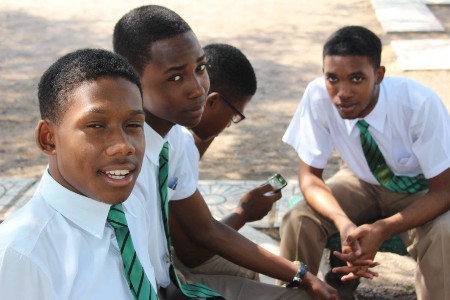The digital divide widened when Covid-19 confined students to virtual learning. The transition was smooth for those with access to technology and Wi-Fi service. Those on the other side of the digital divide faced a lifetime of under-achievement and the transfer of poverty from one generation to another. All the stakeholders in the educational system – students, parents, teachers, government, and alumni associations – therefore have challenges requiring urgent resolution.
 An estimated 400,000 Jamaican students may have not been able to take part in on-line learning because of lack of technology or Wi-Fi at home. Children attending schools in rural areas have special challenges with on-line schooling. Reports suggests that as many as 50 per cent of the students in Hanover were not able to access online schooling between March and December last year. The Covid-19 ripple effect will be devastating if not planned for and addressed immediately.
An estimated 400,000 Jamaican students may have not been able to take part in on-line learning because of lack of technology or Wi-Fi at home. Children attending schools in rural areas have special challenges with on-line schooling. Reports suggests that as many as 50 per cent of the students in Hanover were not able to access online schooling between March and December last year. The Covid-19 ripple effect will be devastating if not planned for and addressed immediately.
Providing equity for the disadvantaged has been central to my work as a teacher and educational administrator in the United States school system for 41 years. A 2021 publication by educator and human rights activist Yvonne McCalla Sobers and titled “Turn on the Lights: Ending Educational Inequality/Inequity” has helped to brief me on the current situation in the Jamaican school system. I share information from that publication in this article
The need for a radical change in the Jamaican educational system is illustrated by gaps in the 2021-2022 budget estimates of the Ministry of Education (MOE) where, for example:
- The MOE estimates do not mention the Covid-19 Pandemic, let alone address its impact on budget allocation to education for the 2021 – 2022 school year.
- There is no provision for students already behind by at least a grade or two, who will have missed 18 months of schooling by the time the school year begins in September 2021.
- The MOE’s mission, vision, and objectives are vague, abstract, generalized and seem unrelated to the problems that learners, teachers, and administrators face in education.
In its 2018 Handbook on Measuring Equity in Education, UNESCO defined equitable funding as providing additional resources for the most disadvantaged children so that every child can receive the same educational opportunities. However. The Jamaican government’s gross underfunding of early childhood education limits children’s readiness for primary education – a major indicator of academic success. For example,the 2019 – 2020 budget allocated only $3.38 billion for early- childhood education, as compared with $38 billion for secondary education.Further, out of a total of 2,700 early childhood institutions, only 122 have been certified by the Early Childhood Commission (ECC) and only about 3,500 out of 10,000 early childhood teachers have the minimum teacher training certification.
Stop gap programmes such as the Alternative Secondary Transition Education Program (ASTEP) have not been able to improve student performance affected by wealth disparities, low wages, high unemployment and poverty. MOE data shows that almost 2160 students between grades 8 and 10 drop out of secondary schools each year. Those who leave school without academic qualifications are likely to be unemployable as at risk for teen pregnancy and early involvement in crime.
The pandemic will negatively impact the already poor performance at the secondary levels where the MOE indicates that:
- Only 38.6 per cent of the grade 11 cohort who sat the Caribbean Secondary Education Certificate (CSEC) in 2014 attained five (5) subjects, including mathematics and English.
- Some 34 per cent of age-level high school students were not recommended to do the SCEC examinations in 2014.
- About 75 per cent of the students attending traditional secondary schools pass five (5) subjects including Mathematics and English at one sitting while only 20 per cent of students attending non-traditional secondary schools pass five CSEC subjects at one sitting.
The pandemic compounds the existing inequality brought about by inadequate and ineffective distribution of resources, parenting, teaching techniques, school leadership, community amenities, and mental/psychological diagnoses for students
A cookie cutter approach will not address the myriad of issues affecting education in Jamaica. Each school needs to develop an action plan that is unique to its demographics and tailored to its stakeholders. Schools have the dilemma of finding the resources to address inequities faced by the children of the poor who are afflicted by the cycles of poverty and unequal opportunity, that 80 per cent of the students who continue to be left behind.
As a Jamaican who lives abroad, I am very concerned about the pending set back that Jamaica faces from the impact of the pandemic. There is an urgency to address the multitude of issues impacting education, creating solutions that will be beneficial to ALL students.
No Child Must Be Left Behind!


